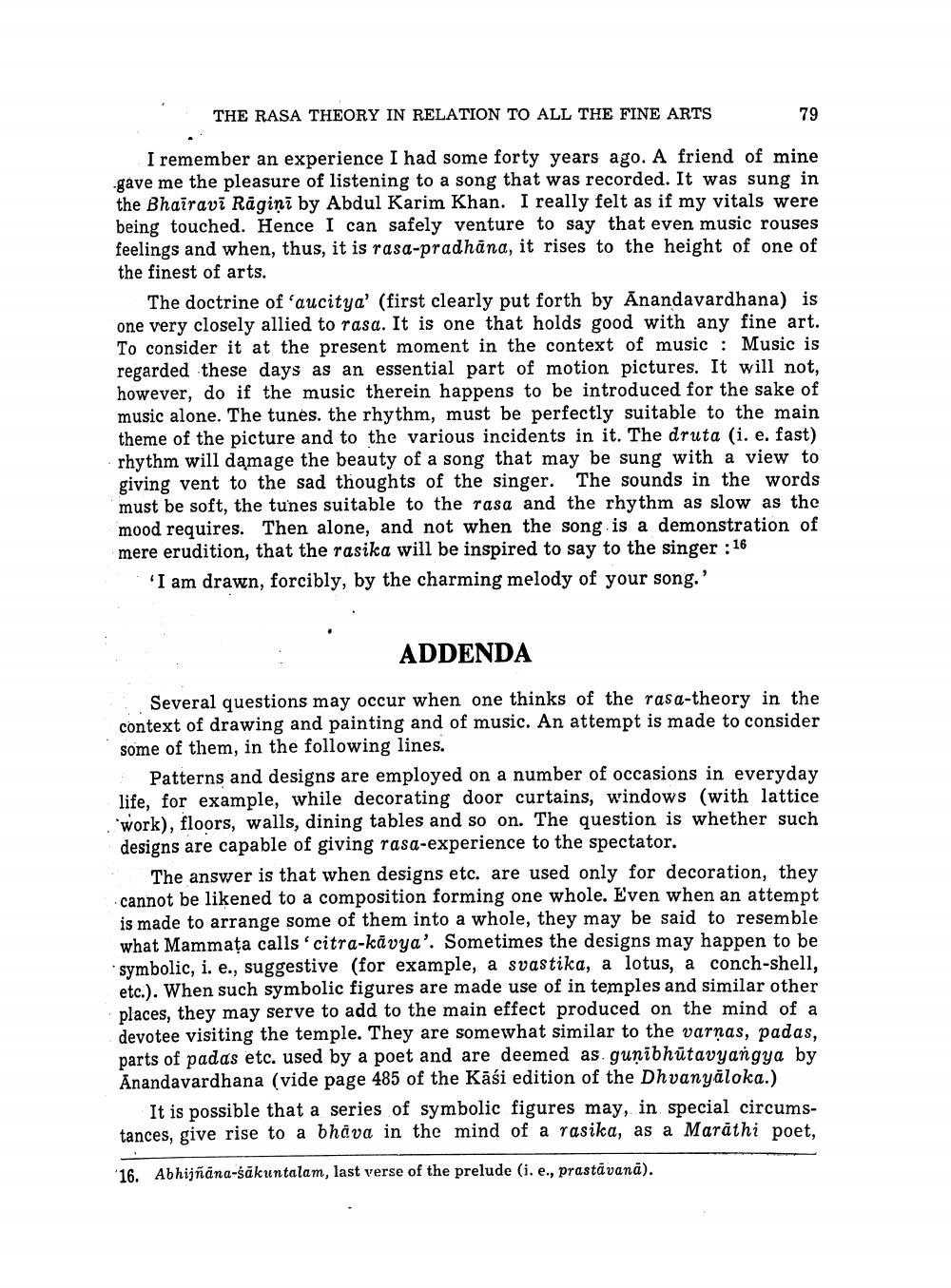________________
THE RASA THEORY IN RELATION TO ALL THE FINE ARTS
79
I remember an experience I had some forty years ago. A friend of mine gave me the pleasure of listening to a song that was recorded. It was sung in the Bhairavi Ragini by Abdul Karim Khan. I really felt as if my vitals were being touched. Hence I can safely venture to say that even music rouses feelings and when, thus, it is rasa-pradhāna, it rises to the height of one of the finest of arts.
The doctrine of aucitya' (first clearly put forth by Anandavardhana) is one very closely allied to rasa. It is one that holds good with any fine art. To consider it at the present moment in the context of music : Music is regarded these days as an essential part of motion pictures. It will not, however, do if the music therein happens to be introduced for the sake of music alone. The tunes. the rhythm, must be perfectly suitable to the main theme of the picture and to the various incidents in it. The druta (i. e. fast) rhythm will damage the beauty of a song that may be sung with a view to giving vent to the sad thoughts of the singer. The sounds in the words must be soft, the tunes suitable to the rasa and the rhythm as slow as the mood requires. Then alone, and not when the song is a demonstration of mere erudition, that the rasika will be inspired to say to the singer : 16
. 'I am drawn, forcibly, by the charming melody of your song.'
ADDENDA
Several questions may occur when one thinks of the rasa-theory in the context of drawing and painting and of music. An attempt is made to consider some of them, in the following lines.
Patterns and designs are employed on a number of occasions in everyday life, for example, while decorating door curtains, windows (with lattice work), floors, walls, dining tables and so on. The question is whether such designs are capable of giving rasa-experience to the spectator.
The answer is that when designs etc. are used only for decoration, they cannot be likened to a composition forming one whole. Even when an attempt is made to arrange some of them into a whole, they may be said to resemble what Mammaţa calls citra-kavya'. Sometimes the designs may happen to be symbolic, i. e., suggestive (for example, a svastika, a lotus, a conch-shell, etc.). When such symbolic figures are made use of in temples and similar other places, they may serve to add to the main effect produced on the mind of a devotee visiting the temple. They are somewhat similar to the varnas, padas, parts of padas etc. used by a poet and are deemed as gunibhūtavyangya by Anandavardhana (vide page 485 of the Kāśi edition of the Dhvanyaloka.)
It is possible that a series of symbolic figures may, in special circumstances, give rise to a bhiva in the mind of a rasika, as a Marathi poet,
16. Abhijñāna-śákuntalam, last verse of the prelude (i. e., prastāvanā).




